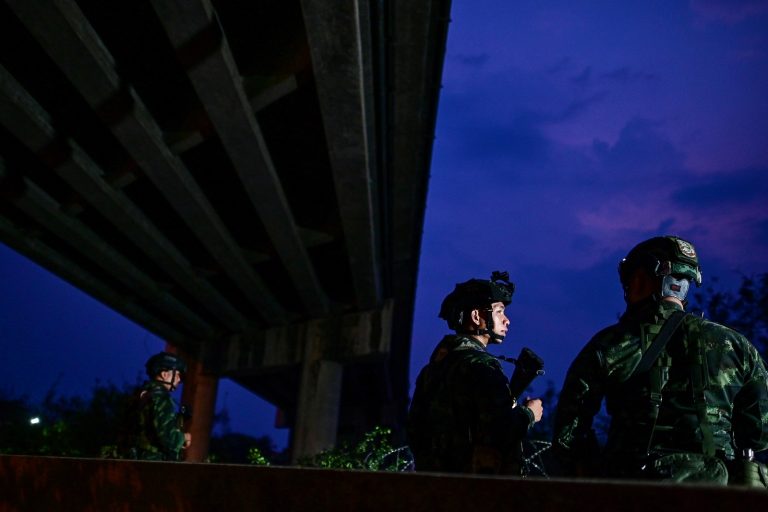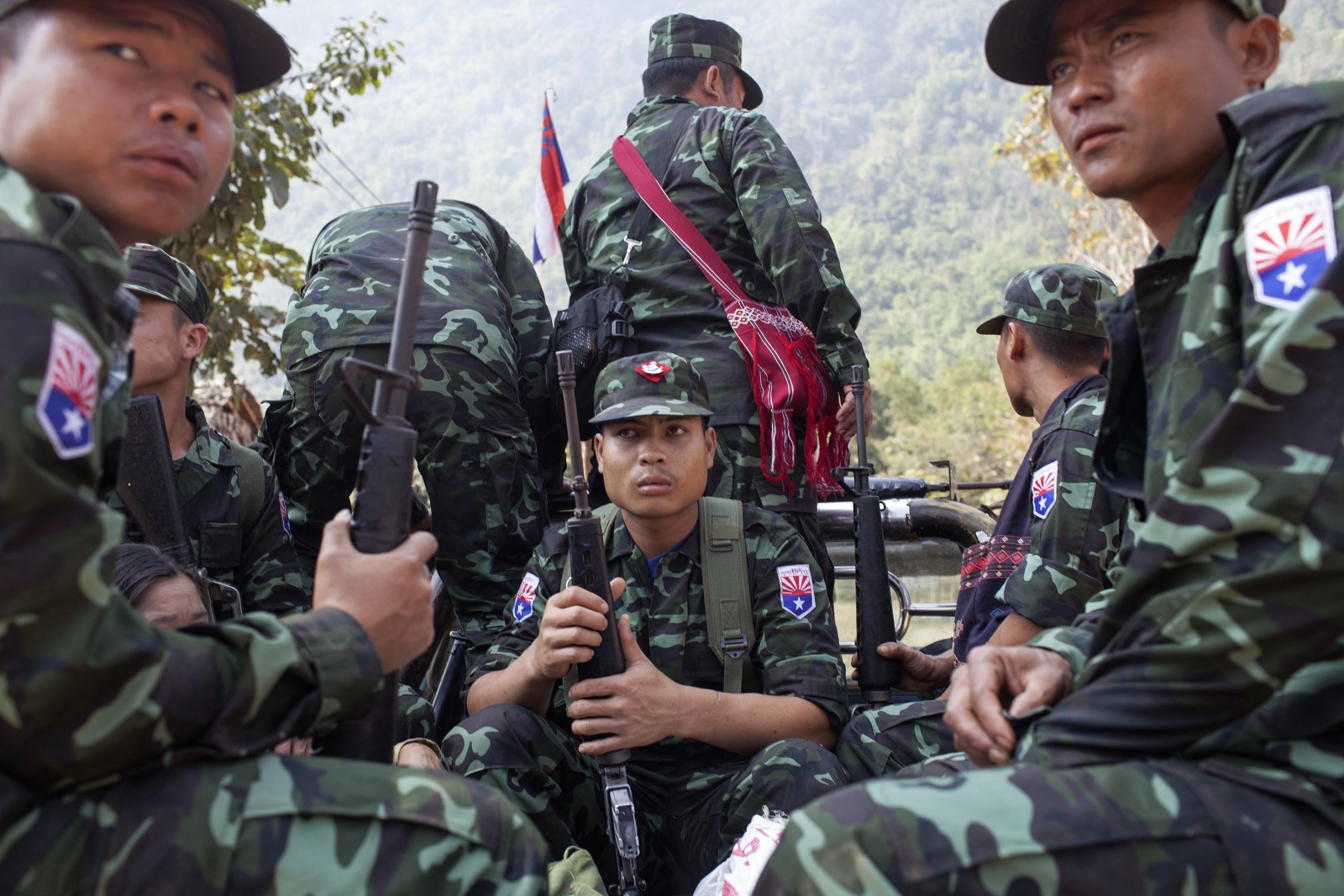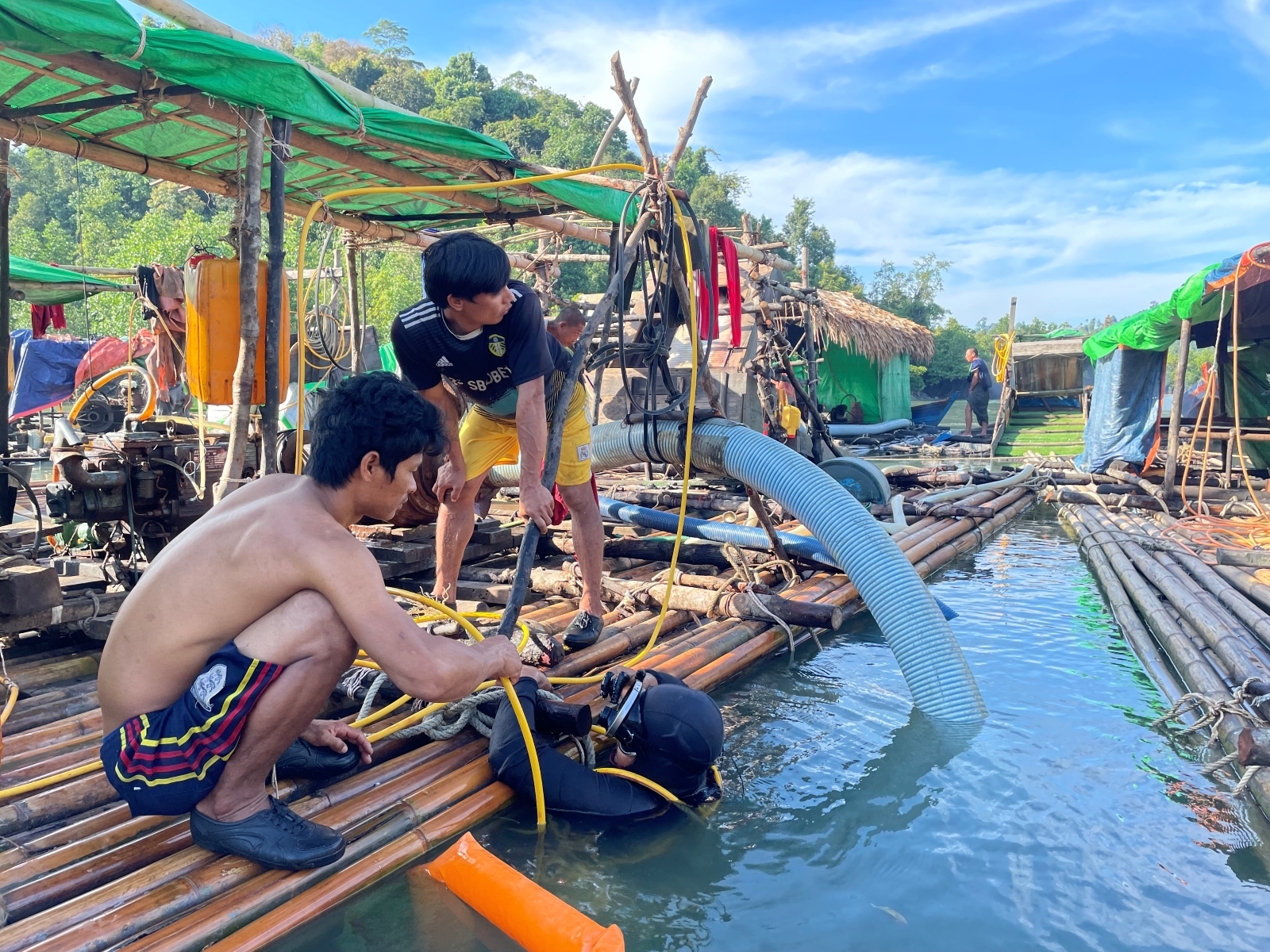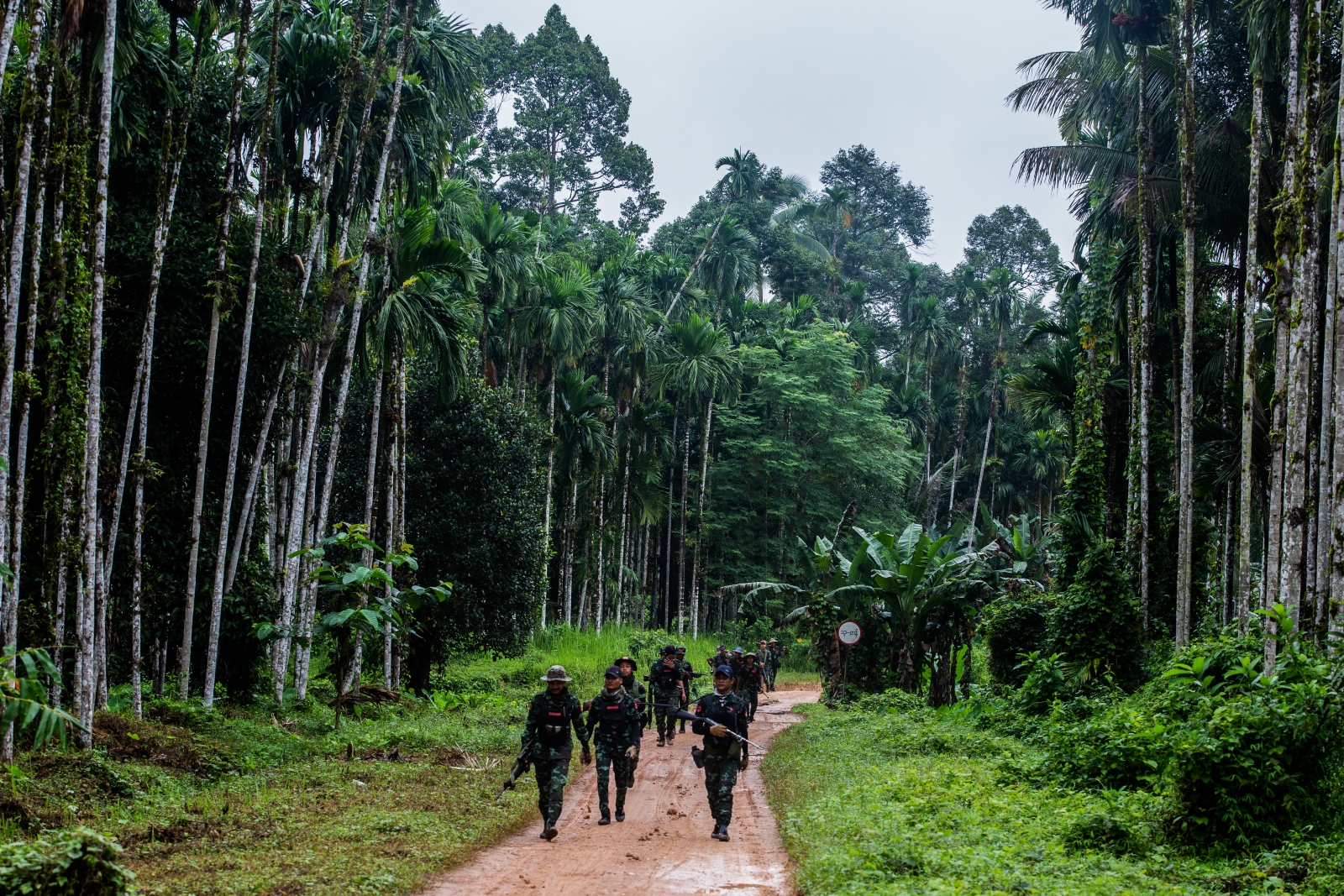In rural Kayin State, residents are uniting against a military-owned corporation’s plan to expand cement production using coal power.
By SU MYAT MON | FRONTIER
Photos THEINT MON SOE aka J
COMMUNITY OPPOSITION is mounting to cement production in Hpa-an Township, Kayin State. For the past three years, residents of 10 villages have banded together as the Thanlwin Network to counter the proposed expansion of the cement industry in the Myaing Kalay area, about two hours’ drive east of Hpa-an.
A factory run by the military has been in operation at Myaing Kalay for more than three decades, but in recent years private investors have also shown interest in the area.
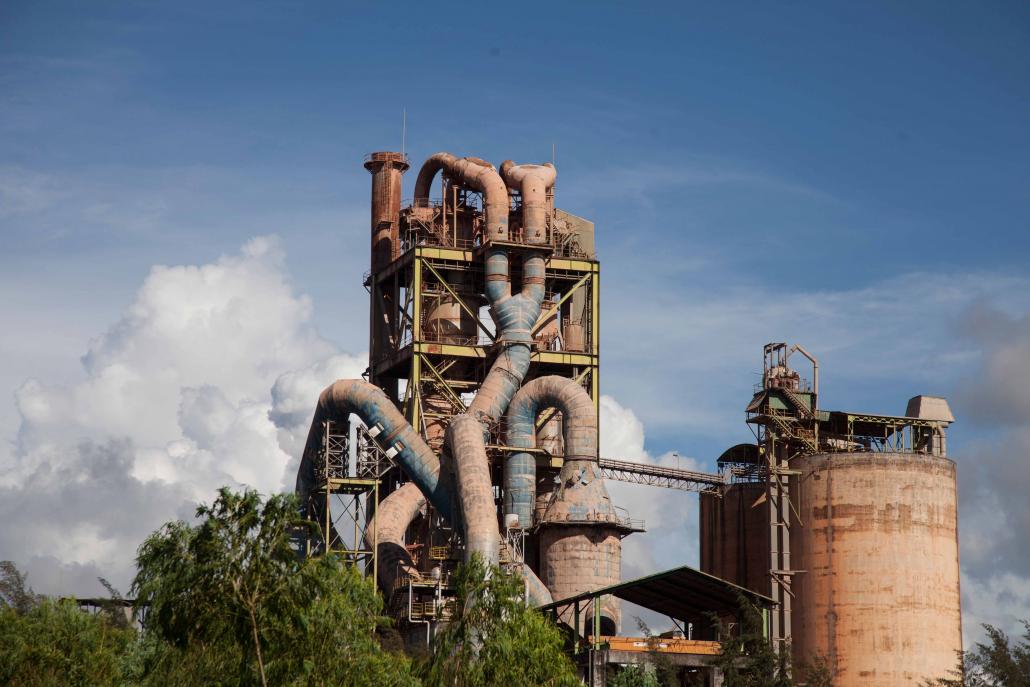
The Myaing Galay cement factory run by the military-owned Myanmar Economic Corporation. A 900 tonnes per day plant was established at the site in the mid 1980s. About a decade ago a second plant was built nearby. (Theint Mon Soe — J / Frontier)
A focal point of this interest is Lay Htee Taung, a limestone mountain range that during wet season becomes an island in the swollen Thanlwin River.
Support more independent journalism like this. Sign up to be a Frontier member.
On September 27, residents launched several books in Myanmar language outlining what they said was the threat that the project poses to their livelihoods and the area’s natural resources.
The project was initiated by the abbot of Mayinkone village, U Wiri. He described the Lay Htee Taung range as “myo set mya ye mein kein” – the “mother” of generations of area residents.
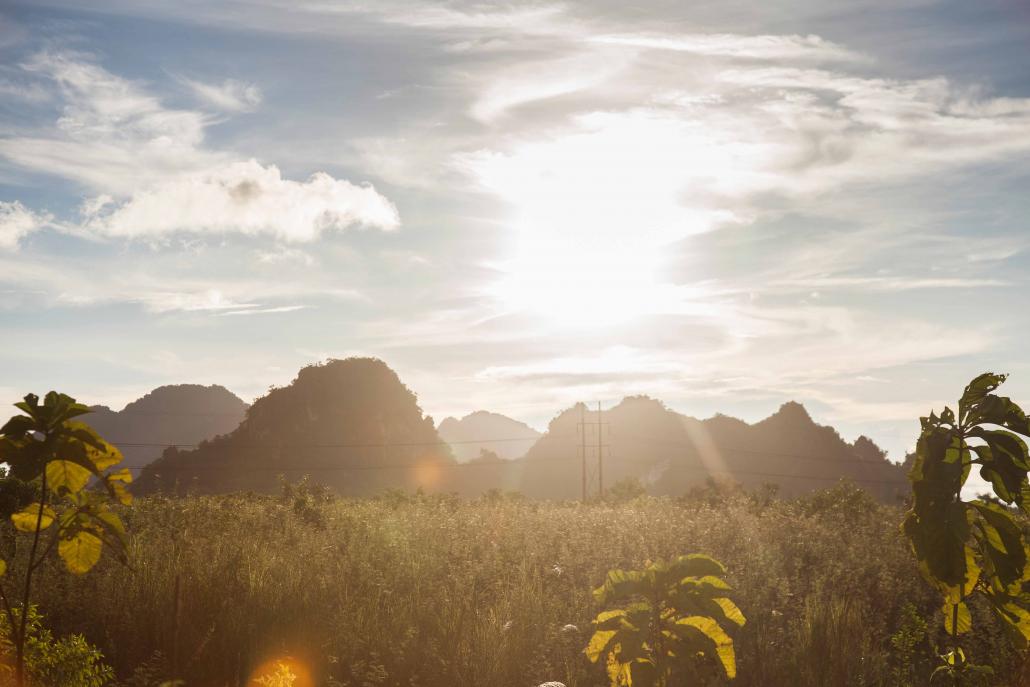
The Lay Htee Taung mountain range seen at sunset from Myaing Galay village on September 27. (Theint Mon Soe — J / Frontier)
The mountain range is home to pagodas and sacred caves, some of which are inhabited by monks.
“If [Lay Htee Taung] is destroyed due to economic projects, we will lose our livelihoods and our culture. We will be responsible [for its destruction] to our descendants,” he told a recent meeting on September 27 in Mayan Kone village that was attended by 400 people.
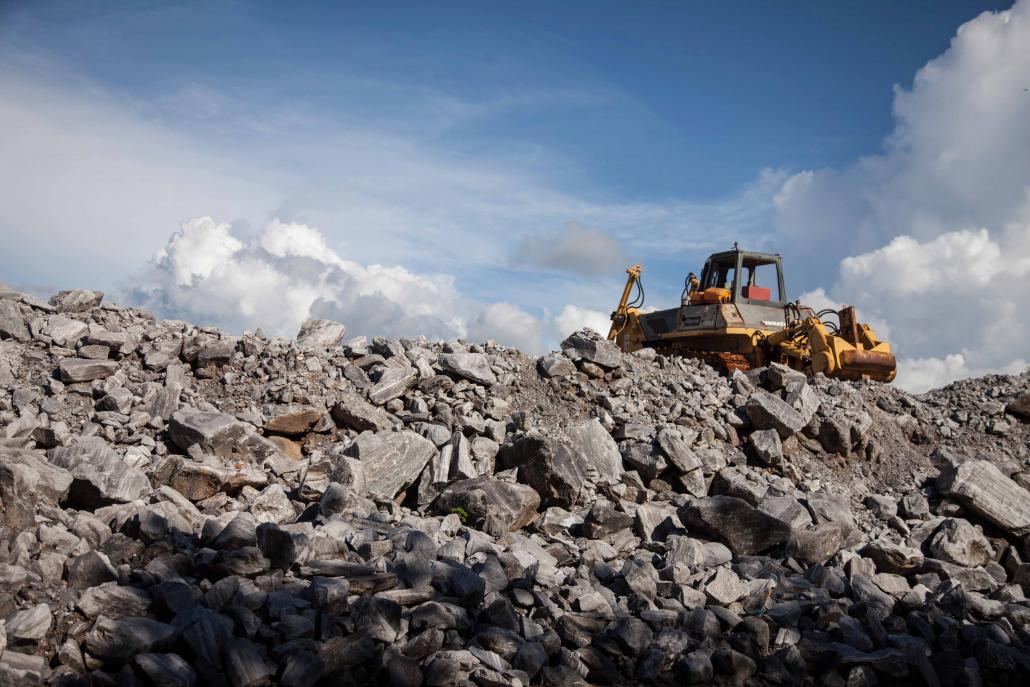
Theint Mon Soe — J / Frontier
But residents are also concerned at plans to expand current operations using a coal-fired power plant.
The Myaing Kalay cement plant run by military-owned Myanmar Economic Corporation was built in the 1980s, and expanded more than a decade ago to more than 4000 tonnes per day. It mines a rich seam of limestone that runs north to south through Kayin State.
When the plant was built, villages were forced to relocate without any compensation. The factory creates air pollution during both hot and cool season.
Residents in the Lay Htee Taung area first became concerned that the cement industry could be set for expansion in 2012, when they noticed staff from private companies were visiting and surveying the area.
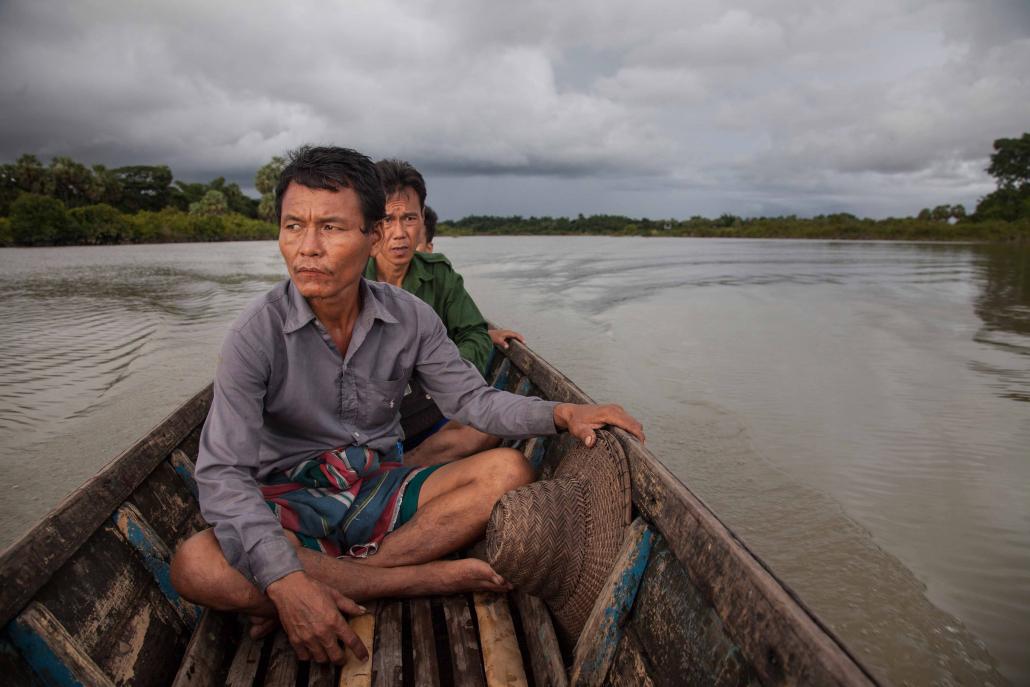
Residents return to Myaing Galay village in Hpa-an Township, Kayin State. (Theint Mon Soe — J / Frontier)
“Since then we started researching the connection between our land and our livelihoods. We felt that if we can show through these books the link between them then we can also see how we might be affected if those companies implement their projects,” said Naw Ae Phaw, a resident of Mayinkone village.
She said the companies came to survey at Lay Htee Taung during rainy season, when much of the land in the area is flooded. Residents fear that the companies want to show that the land is vacant, rather than being used.
“It is not as they said – we grow rice annually in those areas once the water has subsided, and we also use it for fishing,” she said.
But plans also appear to be underway to expand production at the military-owned factory.
On September 17, officials from the factory called a meeting with residents from the area and explained their plans to upgrade the natural gas plant to run instead on coal. Perhaps sensing that this was unlikely to be popular, they brought along 50 bags of cement and three footballs to sweeten the deal.

Theint Mon Soe — J / Frontier
U Soe San Htay, a village administrator in Myaing Kalay, said the officials – chief engineer U Moe Win and deputy officer U Nyi Nyi – had explained that running the plant on gas was not sustainable in the long term due to potential shortfalls in supply.
“They tried to convince us that it won’t be dangerous for either the people or the environment here and then gave a 50-sack of cement to each of our villages,” he said.
Residents said they refused to accept the cement and footballs. Instead they issued a statement the day after the meeting, endorsed by 20 villages, opposing the plan. When Frontier interviewed them, they showed the paper given to them by the factory officials giving them permission to come to the factory and collect the 50 bags of cement.
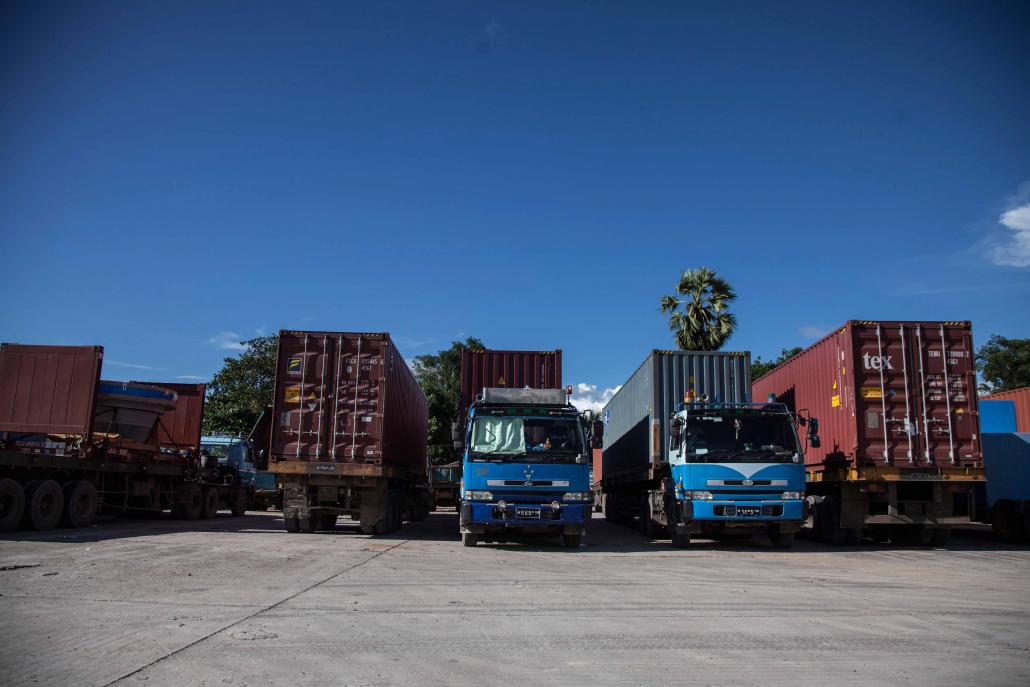
Theint Mon Soe — J / Frontier
“Previously they never spoke to us and they’ve never given us any cement like this. But we can’t accept it; it’s not really useful for us and we think the whole project puts our villages at risk,” Soe San Htay said.
Frontier approached the management of the Myaing Kalay cement factory for comment. Nyi Nyi, one of the officials who took part in the community meeting, refused to comment. “I don’t have the authority to talk about anything to do with that issue. Just ask the villagers,” he said.
Among the people at the September 27 book launch was U Saw Kyi Lin, the general secretary of the Phalone-Sawaw Democratic Party and a former minister for electricity and industry in the Kayin State government.
He said it was important that the current government listened carefully to the wishes of the community when weighing up whether to allow the expansion of cement production.
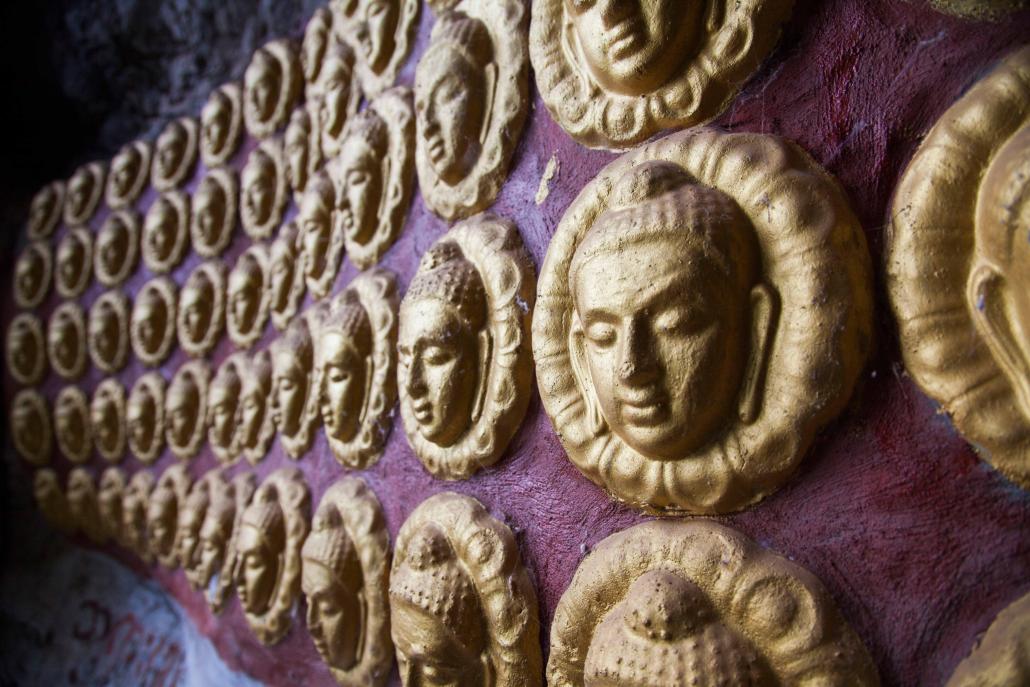
The limestone mountains in the nearby Lay Htee Taung range are home to numerous caves and pagodas. (Theint Mon Soe — J / Frontier)
“The government has to listen the voice of the public – otherwise its time in office will only be five years,” he said.
Although the Thanlwin Network said it invited their national and state parliamentary representatives – who are all from the National League for Democracy – to last month’s event, none turned up. The party requires its parliamentarians to seek permission from headquarters before attending civil society-organised events.
Frontier was unable to reach any of the MPs in question, including chief minister Daw Nang Khin Htay Myint, to ask their position on the cement industry at Lay Htee Taung.
However, U Min Tin Win, the Kayin State minister for Mon ethnic affairs, who is also from the NLD, said that village officials from Hlaka, which is near the Myaing Kalay plant, had recently visited Hpa-an and discussed the issue with the chief minister.
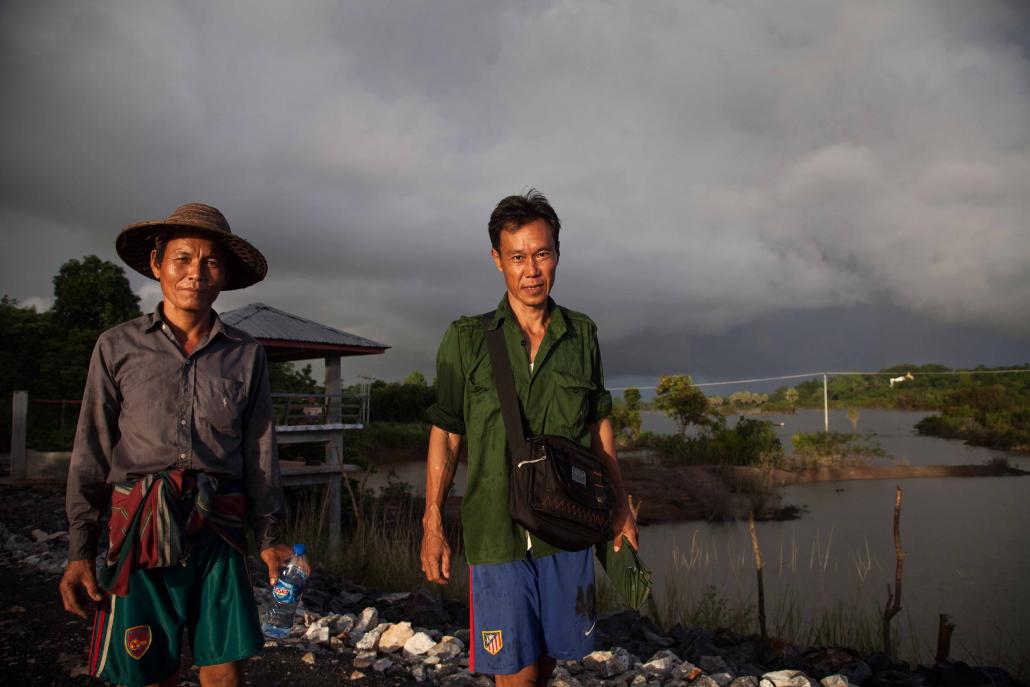
Theint Mon Soe — J / Frontier
He said Myanmar Economic Corporation had not yet sought official permission to build a coal plant at the site. “If they ask then we, the government, will have to consider it,” he said.
The meeting was attended by U Min Ko Khine, an NLD Kayin State Hluttaw representative for neighbouring Kawkareik Township. He said that the government needed to carefully weigh the advantages and disadvantages of any proposed industrial project, and also consider the wishes of the community. “We have to observes the wishes of the locals,” he said.
At Lay Htee Taung, it seems that the community’s voice is united: no coal power, and no more cement factories.
Ko Hla Thet Oo, a villager from Kaukayitkone, said the military factory at Myaing Kalay had already brought enough problems. Wastewater and air pollution were harming the animals, he said, adding that about 15 people who work at the factory have been hospitalised with diseases such as lung cancer.
“If you don’t believe me,” he said, “just go to Hpa-an Township Hospital – you can see them for yourself.”



